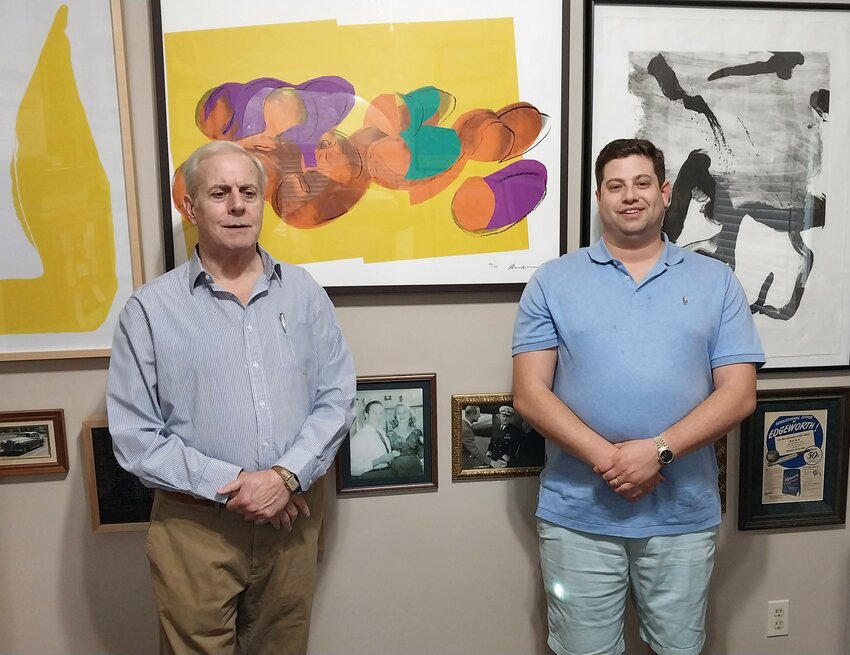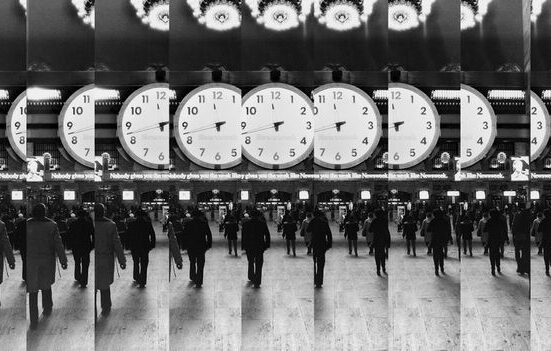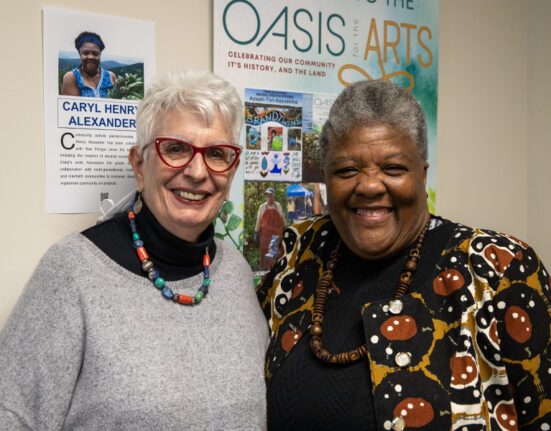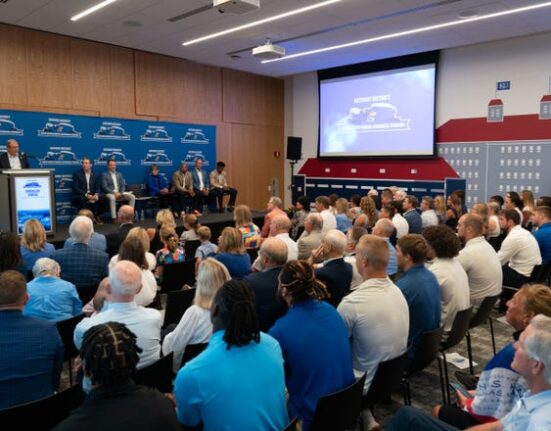By Shaun Ryan
There’s a reason why the noun “artist” is so often preceded by the adjective “starving.” Even some of the greatest names in the art world have had to struggle, and all too often their work never achieves full popular appreciation until the artist passes on.
Van Gogh, for instance, sold only one painting during his lifetime, and for that he is said to have been paid 400 francs.
Consider then the challenges faced by those who buy and sell art for a living. The world is filled with people who say they love art and yet are not willing to purchase it; they browse galleries the way they might museums, wallets and pocketbooks forgotten.
But knowledgeable, industrious purveyors know how to inhabit the niche market and turn a profit.
“It’s a tiny market,” said Alex Graves, who with his father, John Graves, operates Graves International Art, headquartered in St. Augustine.
The family business, founded in 1978, defied the odds and has grown into one of the world’s most respected dealers of art that dates between the 1500s and today.
Perhaps the secret to the business’s success is the deep appreciation father and son have for the object of their trade.
“I’m doing this because I love art, and I love humanity, I love history, I love the analog world, which I’m trying to keep alive,” said the elder Graves.
“This is a true passion and dedication,” said his son. “It’s not even a job. It’s not even a career. We have dedicated our lives to this.”
Humble Beginnings
Forty-six years ago, with earnings from a temporary job and a $600 loan from his father, John Graves opened his first, 600-square-foot shop in St. Augustine’s Lightner Antique Mall. His stock, as the name of the venue implies, was antiques.
“You can’t go into the art business without any money,” he said. “But I could start out with some antiques.”
After his first month in business, Graves earned enough money to pay for his second month’s rent.
In fact, business was good enough that he was able to sell off the antiques and purchase his first artworks, original posters by Marc Chagall and Pablo Picasso.
He moved his business to the San Marco area near where he was living in Jacksonville. The shop occupied half a building, the other half a barbershop where he would meet members of the community who would help him develop his enterprise. He may not have had the kind of money it took to purchase an original work by Picasso, but he had cultivated the essential contacts and was able to broker sales at a small commission.
He began to purchase his own art and moved his shop to Jacksonville’s Lakewood Plaza, where he really began to taste success.
In 1986, he moved his gallery to Gates of Olde Mandarin next to friend Paul Hanson’s former Tree Steakhouse and then later to Riverplace Shopping Center next to the former Stein Mart, all the time growing in success.
But when the Gulf War broke out, Graves foresaw an economic downturn approaching and decided to make an even bigger relocation.
On the move
Graves moved his family to the small town of Somerset, Virginia, on land once owned by President James Madison. Located right on the Constitution Highway, the family occasionally saw U.S presidents drive past.
Graves turned a small outbuilding into a little gallery and set a sign out at the roadside inviting passersby to visit his Old Somerset Print Shop. He opened other galleries — in Washington, D.C., and Orange, Virginia, and finally a very large one in nearby Gordonsville next to a five-star French eatery, Restaurant Pomme.
Finally, Graves moved to Court Square in Charlottesville, Virginia, where in 2017 the infamous riots took place — directly across the street from the gallery.
“So, we moved out of there and came back to Jacksonville,” Graves said.
A different kind of move
In 2011, while the gallery was making a name for itself in Virginia, Alex Graves took his first step into the world of art sales.
“I quite simply started coming in just to hang out and see if I could help,” he said.
At first, he started coming into the gallery one day a week. Then, two. Then, three days, four and finally all week long. He worked on commission and invested 65 cents on every dollar he earned into purchasing art.
At the time, the internet was impacting the market in a big way, and major online sites began to contact the Graves gallery about selling there. With an appreciation for digital commerce that so often resides with youth, Alex Graves steered the gallery to join 1stDibs and Artsy, and eventually artnet.
The move to online commerce immediately proved its worth. Sales over the internet overwhelmingly dwarfed those made in person because the gallery’s reach had increased so dramatically. And at a time when the cost of maintaining a “brick-and-mortar” establishment was a serious concern, online sales offered a second benefit: much reduced overhead.
By 2019 after the family relocated to St. Augustine, virtually all of the business was conducted online. Still, John and Alex Graves will meet with people at the Prairie Creek home by appointment. Occasionally, they also meet local customers at their homes to assess the available space. And the business does appraisals for those living within 100 miles.
Operating a business like this requires a high level of trust, and Graves International Art takes authenticity very seriously.
Keeping it real
John and Alex Graves acquire art three ways: from private collections, other art dealers and auctions, though the latter is no place for the amateur. It requires a very high level of expertise.
“Unless you’re buying from Christie’s, Sotheby’s, Phillips, you’d better know what you’re doing,” said Alex Graves.
The greatest volume of art that Graves International Art deals in is prints — real, handmade prints created by the artist. Authenticating them requires a deep knowledge of paper — the size, source materials, the presence of screen impressions and any possible watermark. Each attribute signifies the norms of a specific historic place and time and must match the artist’s circumstances. Is the image produced via intaglio engraving, lithography or silk screen? How was the paper created and what medium was used?
Another factor is whether the work is signed — and the presence of a signature is no guarantee that it’s real. In fact, prints predating 1900 tended to be unsigned.
“Whistler learned if he signed his print, he’d get 10 more shillings for it,” said John Graves.
Even today, many artists don’t sign their prints. So the authenticator is not easily impressed by signatures, numbering or certificates of authenticity. There is simply no substitute for expertise.
“Even if you know it is real, it is not real unless you can prove it,” said Alex Graves.
If prints require enhanced knowledge, original works pose even greater challenges.
“You’d better know where that piece came from,” said the younger Graves.
An authenticator may need to consult with archives, estates, museums and international experts. He may need to travel to other countries. And he must be realistic.
“In 46 years, I haven’t had anybody offer me an authentic Picasso painting,” said John Graves. When encountering an original work that requires a level of authentication beyond his expertise, Graves knows where he can turn to get the best possible determination.
When it comes to trust, Graves had some advice for art collectors.
“We own everything we sell, and I think that makes a big difference,” he said. “The best person in the art business to trust is someone who is actively buying and selling the work as a dealer, not someone who wrote a book about the artist and not someone who took it in consignment without a single dollar of risk going into it. Someone who is actually finding it, authenticating it, buying it themselves and successfully selling it — that’s who you should trust.”
Prospective art collectors can learn more at gravesinternationalart.com. John Graves can be reached via email at gravesfineart1@gmail.com and by phone at 904-547-2591. Alex Graves’ phone number is 904-460-5100.







